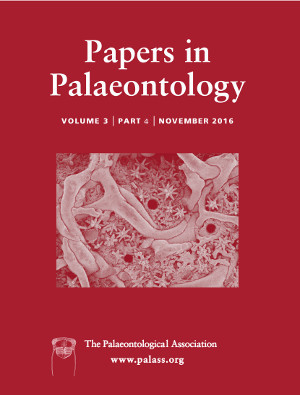Reg. Charity No. 1168330

Compsodon helmoedi is an obscure dicynodont originally described based on a single specimen from the upper Permian of the Karoo Basin. The discovery of three new specimens of Compsodon from the Luangwa Basin of Zambia and two additional specimens from South African museum collections facilitates a reassessment of its cranial morphology and phylogenetic position. Compsodon is diagnosed by an autapomorphic secondary palate morphology: medial depression at anterior end of premaxillary secondary palate; medial anterior palatal ridges absent; lateral anterior palatal ridges prominent and extend to posterior end of secondary palate; Y‐shaped anterior end of posterior median palatal ridge; embayment of palatal rim anterior to caniniform process divided into two depressions by a posteromedially‐trending ridge. Other important characters include the presence of maxillary ‘postcanines’ and a postcaniniform keel; long interpterygoid vacuity; palatine pad smooth and pierced by a foramen; pineal foramen flanked by swollen eminences of parietals; parietals fused and narrowly exposed between broad postorbitals on dorsal surface of skull; and pocket‐like depression on lateral surface of maxilla. Phylogenetic analysis demonstrates that Compsodon is a member of Emydopoidea, but underscores major outstanding problems in our understanding of Permian dicynodont phylogeny that require further attention. The cranial morphology of Compsodon converges on that of cryptodonts like Tropidostoma, and as such represents a unique emydopoid morphotype. The stratigraphic range of Compsodon probably spans the upper Cistecephalus and lower Daptocephalus assemblage zones, and its presence in South Africa and Zambia reinforces a pattern of small Permian dicynodonts with wide geographical ranges in southern Gondwana.